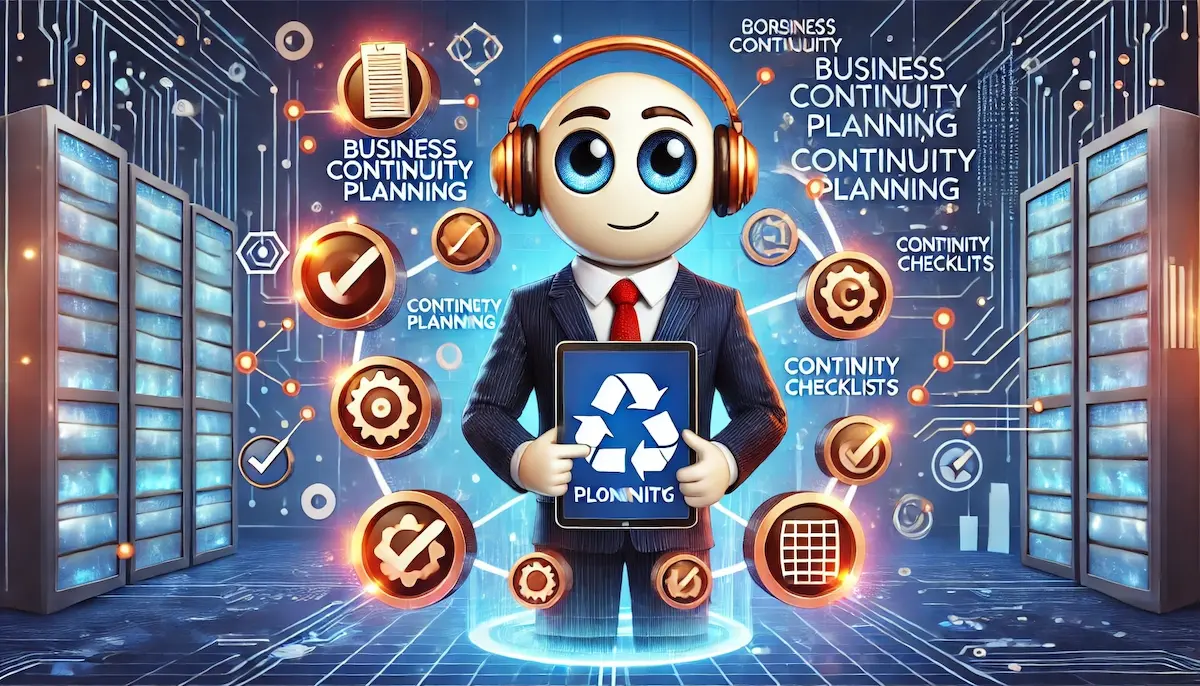In today’s fast-paced and unpredictable world, organizations face numerous risks that can disrupt operations, from natural disasters and cyberattacks to supply chain failures and pandemics. To ensure that they can continue to operate during and after a crisis, businesses must have a solid Business Continuity Planning (BCP) strategy in place. BCP is essential for safeguarding not only the organization’s assets but also its reputation and ability to serve customers.
What is Business Continuity Planning?
Business Continuity Planning is the process of creating systems and procedures that enable an organization to maintain or quickly resume critical operations during a disruption. A BCP outlines how the organization will manage unexpected events and ensure that essential functions continue, minimizing the impact on employees, customers, and stakeholders.
BCP is more than just disaster recovery; it is a comprehensive approach that addresses all aspects of the business, including people, processes, technology, and communication. The goal is to prepare for any potential disruptions and to ensure that the organization can continue to function even in the face of adversity.
Key Components of Business Continuity Planning
A successful Business Continuity Plan consists of several key components that work together to ensure the organization’s resilience:
1. Business Impact Analysis (BIA)
The first step in developing a BCP is conducting a Business Impact Analysis. BIA identifies and prioritizes the critical business functions and processes that must be maintained during a disruption. It assesses the potential impact of various types of disruptions on these functions and determines the acceptable amount of downtime for each.
2. Risk Assessment
A thorough risk assessment is essential to identify potential threats to the organization, such as natural disasters, cyberattacks, or supply chain disruptions. This assessment helps determine the likelihood of these risks and their potential impact on the business, guiding the development of mitigation strategies.
3. Recovery Strategies
Once critical functions and risks are identified, the next step is to develop recovery strategies. These strategies outline how the organization will continue operations during a disruption, including the resources, personnel, and technology required. Recovery strategies might include backup systems, alternative work locations, or manual processes.
4. Plan Development
The BCP itself is a detailed document that outlines the procedures and protocols for maintaining business operations during a disruption. It includes clear instructions for employees, defines roles and responsibilities, and provides contact information for key personnel. The plan should be easy to understand and accessible to all relevant parties.
5. Training and Awareness
A BCP is only effective if everyone in the organization understands their role and responsibilities during a disruption. Regular training and awareness programs ensure that employees are familiar with the plan and can execute it effectively when needed. These programs also help reinforce the importance of business continuity and keep the plan top of mind.
6. Testing and Exercises
Regular testing and exercises are critical to ensuring that the BCP will work as intended during a real disruption. These activities simulate various scenarios to test the plan’s effectiveness, identify any weaknesses, and provide opportunities for improvement. Testing can include tabletop exercises, full-scale drills, and simulations.
7. Plan Maintenance and Review
A BCP is not a one-time effort; it must be regularly reviewed and updated to reflect changes in the organization, such as new technology, processes, or personnel. Ongoing maintenance ensures that the plan remains relevant and effective, ready to be implemented when needed.
Benefits of Business Continuity Planning
Implementing a Business Continuity Plan offers numerous benefits, making it an essential part of any organization’s risk management strategy:
1. Minimized Downtime
A well-prepared BCP helps minimize downtime during a disruption, allowing the organization to quickly resume critical operations and reduce the impact on customers and revenue.
2. Protection of Assets
BCP protects the organization’s physical and digital assets by ensuring that safeguards are in place to prevent loss or damage during a crisis.
3. Enhanced Reputation
Organizations that can maintain operations during a disruption demonstrate reliability and resilience, which enhances their reputation with customers, partners, and stakeholders.
4. Regulatory Compliance
Many industries require organizations to have a BCP in place as part of their regulatory compliance. A well-developed BCP helps meet these requirements and avoid potential penalties.
5. Improved Risk Management
By identifying and addressing potential risks, BCP enhances the organization’s overall risk management strategy, making it more resilient to future disruptions.
Challenges of Business Continuity Planning
While the benefits of BCP are clear, there are challenges to consider:
- Resource Allocation: Developing and maintaining a BCP requires time, effort, and resources, which can be a challenge for organizations with limited budgets.
- Employee Buy-In: Ensuring that all employees understand the importance of BCP and are willing to participate in training and exercises can be difficult.
- Keeping the Plan Current: As the organization evolves, the BCP must be regularly updated to remain effective, which requires ongoing attention and commitment.
Conclusion
Business Continuity Planning is a critical component of an organization’s ability to survive and thrive in the face of unexpected disruptions. By developing a comprehensive BCP, organizations can ensure that they are prepared to maintain operations, protect their assets, and serve their customers even during challenging times. A well-executed BCP not only safeguards the business but also reinforces its reputation as a reliable and resilient organization.
Blockfine thanks you for reading and hopes you found this article helpful.
